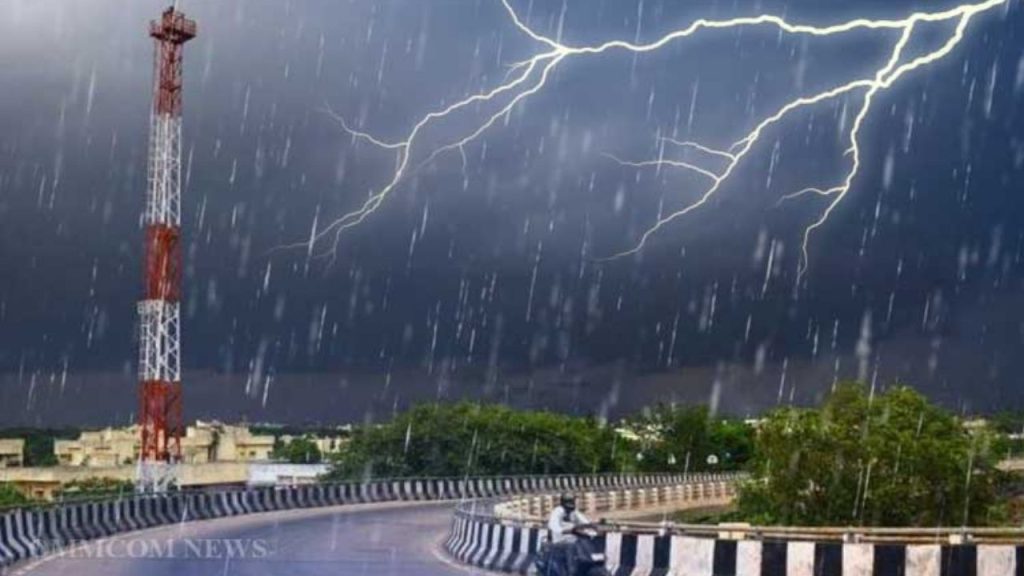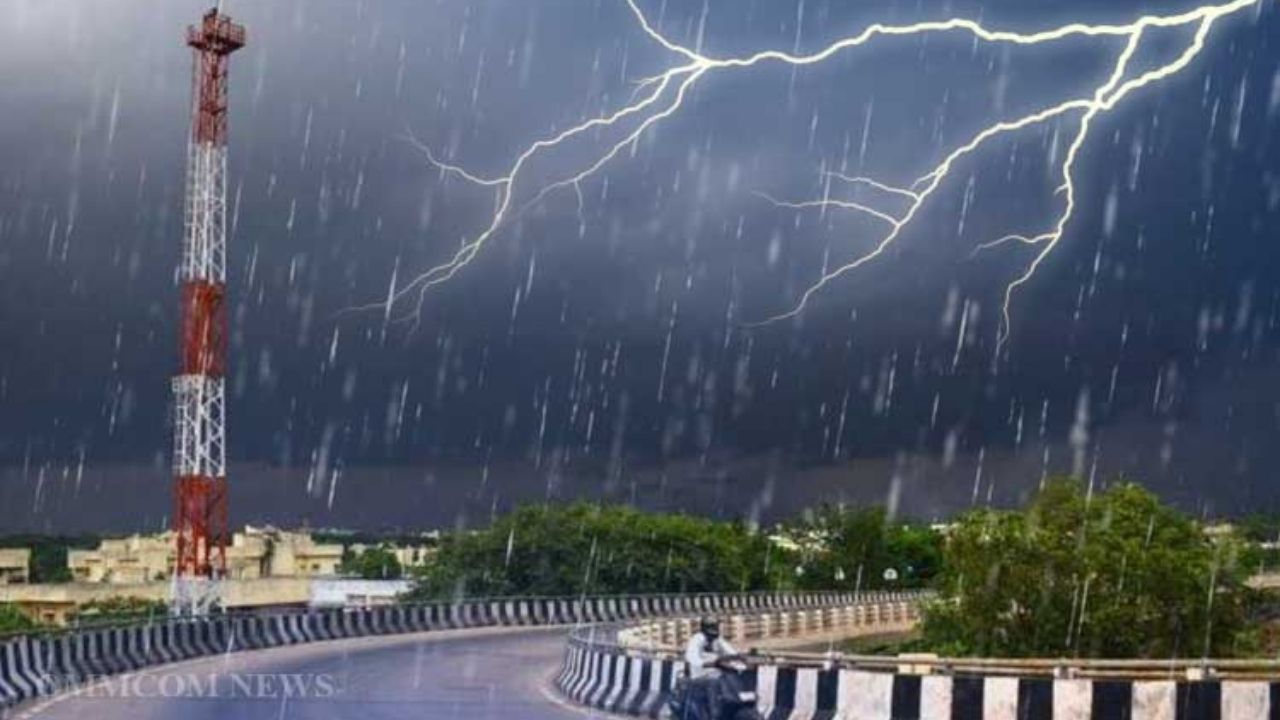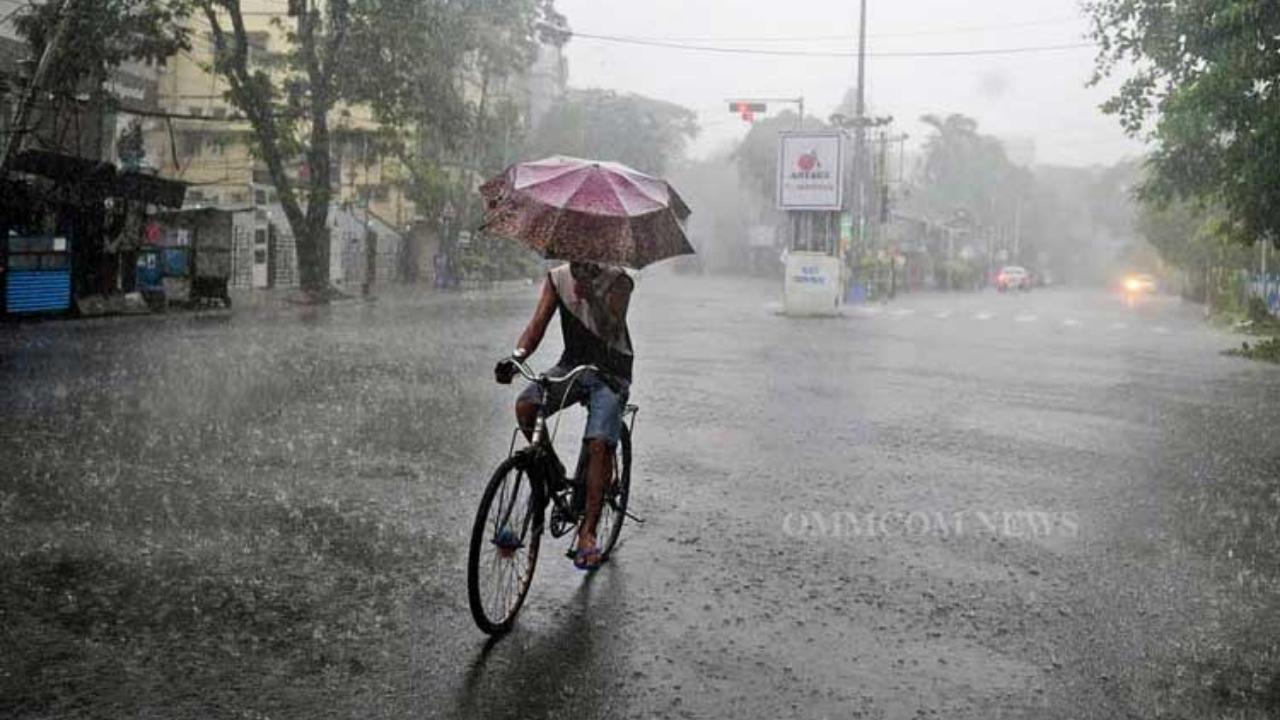BHUBANESWAR—The India Meteorological Department (IMD) has issued a heavy rain and thunderstorm warning for numerous districts in Odisha, forecasting a five-day period of intense weather activity. This alert is prompted by a monsoon trough that has formed over the Bay of Bengal, signaling a heightened risk of localized flooding, lightning strikes, and traffic disruptions across the state. Authorities are mobilizing disaster response teams and urging residents, particularly those in low-lying areas, to remain vigilant and take necessary precautions.

Monsoon Trough Intensifies over Bay of Bengal
The India Meteorological Department (IMD) regional center in Bhubaneswar announced the forecast, stating that a monsoon trough at mean sea level is passing southeastward to the northeast Bay of Bengal. This atmospheric condition is the primary driver behind the anticipated inclement weather. According to the IMD’s mid-day bulletin, the weather system is expected to bring widespread rainfall, with isolated pockets receiving heavy to very heavy showers. The period of concern spans from August 6 to August 10.
A Yellow Warning has been issued for more than half of Odisha’s districts, including Balasore, Bhadrak, Jajpur, Kendrapara, Cuttack, Jagatsinghpur, Sundargarh, Jharsuguda, Bargarh, Sambalpur, Deogarh, Angul, Dhenkanal, and Keonjhar. The warning extends to coastal and interior regions, highlighting the broad reach of the weather system. Forecasters also predict accompanying thunderstorms with lightning and gusty surface winds, with speeds reaching 30-40 kmph in some areas.
| Key Fact | Detail/Statistic |
| Warning Period | August 6 to August 10, 2025 India Meteorological Department (IMD) Bulletin |
| Primary Cause | Monsoon trough over the Bay of Bengal IMD Bulletin |
| Affected Districts | Over 20 districts, including coastal and northern regions |
| Expected Conditions | Heavy rain, thunderstorms, lightning, and gusty winds (30-40 kmph) |
Government and Public Preparedness
In response to the IMD’s forecast, Odisha’s government, under the guidance of the Special Relief Commissioner (SRC), has activated its disaster management protocols. District collectors and municipal commissioners have been instructed to remain on high alert. The SRC, a key state agency for disaster response, is tasked with coordinating relief and rescue operations.
“We have asked all district administrations to be prepared for any eventuality,” said an SRC official, speaking on condition of anonymity to discuss internal directives. “This includes readiness to manage urban waterlogging, potential river swelling, and to evacuate residents from low-lying and vulnerable areas if necessary.” Authorities have been directed to ensure that control rooms are operational around the clock with adequate staff and to keep cyclone and flood shelters ready for potential use.
The Odisha State Disaster Management Authority (OSDMA) has also been monitoring the situation closely. The OSDMA was established in the aftermath of the devastating 1999 super cyclone and has since developed into a model for disaster preparedness in India. It is known for its multi-faceted approach, which includes early warning systems, constructing disaster-resilient infrastructure, and community-based training.

The state’s proactive approach is a direct result of its historical vulnerability to natural disasters, particularly cyclones and floods. The long coastline and a network of major rivers, including the Mahanadi, Brahmani, and Baitarani, make it susceptible to seasonal flooding during the monsoon.
Broader Context of Weather Systems
The current weather system is characteristic of the Indian monsoon season, a crucial period for agriculture but also a time of significant weather risk. While tropical cyclones are more frequent during the pre-monsoon (April-May) and post-monsoon (October-November) seasons, monsoon troughs can also intensify and cause significant rainfall events. According to a study on the climatology of tropical cyclones in the Bay of Bengal, the monsoon season typically inhibits cyclogenesis due to strong vertical wind shear, but “sporadic cyclogenesis can occur during weakened monsoon onset and subdued circulation.”
This weather pattern, characterized by the monsoon trough’s position, can bring about a prolonged period of rainfall. This can be beneficial for agricultural activities by replenishing reservoirs and groundwater. However, it also carries the risk of crop damage from excessive waterlogging. The state’s economy, heavily reliant on agriculture, is particularly sensitive to these rainfall events.
Residents are advised to be cautious of potential disruptions to daily life. This includes avoiding travel during intense downpours, staying clear of swollen rivers and streams, and securing loose objects that could be displaced by strong winds. Fishermen, in particular, have been warned against venturing into the sea as a precaution against rough conditions.
The state government’s preparedness measures extend to monitoring river embankments, which are often the first to be affected by rising water levels. The Department of Water Resources is actively tracking water levels in major rivers and dams to pre-emptively manage any flood-like situations.
Rourkela Consumers Face Sticker Shock as Monsoon Drives Up Veggie Costs
Odisha’s Weather Woes: Orange Alert Declared for Next 48 Hours
Ganjam’s Aryapalli Beach Disappears: Climate Change Accelerates Coastal Erosion in Odisha
Potential Impacts and Forward-Looking Statements
The projected rainfall is expected to alleviate some of the moisture deficit in certain parts of the state, but the immediate threat remains localized flooding and infrastructure strain. The SRC has also highlighted the risk of lightning strikes, which are a major cause of casualties during the monsoon season in Odisha. Public awareness campaigns are being conducted to educate people on safety measures during thunderstorms.
The IMD will continue to issue daily updates and revise its warnings as the weather system evolves. The focus for the next several days will be on rapid response and mitigation to minimize damage and ensure public safety. Authorities have expressed confidence in the state’s preparedness, built on years of experience in managing similar weather challenges.





